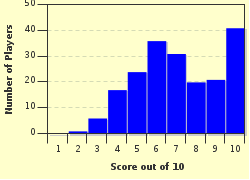Quiz Answer Key and Fun Facts
1. In December 1787, HMS Bounty set sail for Tahiti, under the command of (then) Lieutenant William Bligh. They arrived in October 1788. What was the original purpose of the Bounty's voyage?
2. After spending several months in Tahiti, the Bounty finally set sail for the West Indies. There was a mutiny on board the ship soon after, led by Fletcher Christian. After the mutiny, the Bounty was taken back to Tahiti. Sixteen of the mutineers decided to remain there. What was the fate of the men who stayed in Tahiti?
3. After the mutiny, Bligh and his loyal crewman were ordered into the ship's launch and set adrift. What was the fate of William Bligh?
4. The Bounty finally arrived at its final destination, Pitcairn Island, on January 15, 1790. In addition to the mutinous Bounty crew members, there were six Tahitian men and about twelve Tahitian women aboard the ship when it arrived at Pitcairn.
5. By 1856 the population of the island was considered to be so high that the British government resettled everyone on Norfolk Island. Some families eventually returned to Pitcairn, and the population there has held steady for a long time. What is the approximate population of Pitcairn Island?
6. What an important source of income for today's Pitcairn Islanders?
7. The predominant religion among the Pitcairn Islanders today is Anglican.
8. What are the official languages spoken on Pitcairn Island?
9. The inhabitants of Pitcairn Island lived in isolation and obscurity until a scandal came to light. Seven male islanders were accused of a serious crime. What was it?
10. Suppose you want to visit Pitcairn Island-which is much easier said than done. How does a visitor reach the island?
Source: Author
robbieh
This quiz was reviewed by FunTrivia editor
bloomsby before going online.
Any errors found in FunTrivia content are routinely corrected through our feedback system.

